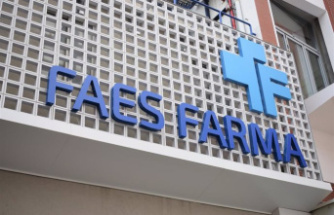The time is to the reconciliations in the automotive industry. The board of directors of Renault, which met in the early morning, has approved the opening of discussions on the basis of the offer presented by Fiat-Chrysler, for a merger.
generally speaking, when the market is in a very bad position and that investments in the electric and autonomous car are necessary, the manufacturers want to get closer in order to survive. But the connections in the car do not date from yesterday. Successful or failed, back on the "weddings" of the last twenty years.
" READ ALSO - Auto: the return of the big moves
● DaimlerChrysler, a real failureIt was the merger of the century. Symbol of know-how that German with its Mercedes brand, the group Daimler-Benz married with great fanfare in 1998 with the manufacturer of the medium-range american Chrysler, a loss of speed. During the announcement of the marriage, Chrysler flying out of +15% on the New York stock Exchange, and Daimler-Benz did the same to +10% in Frankfurt. The turnover of the new behemoth weighs 128.3 billion dollars. The merger is announced peer-to-peer, but the German group brought as a dowry 36 billion dollars and takes over the reins of the team.
originally, the reconciliation had to work through its complementarity (Chrysler is located in the United States and selling in particular of minivans when Mercedes, the giant of the group Daimler, sold mainly in Europe, with cars more top of the range). Except that since 1999, Chrysler has had to suffer an offensive of unprecedented manufacturers, japanese or Korean, offering products that are as good but less expensive, attractive to the traditional clientele of the brands Chrysler and Dodge.
" READ ALSO - The car forced to adapt to the crisis
The american manufacturer is thus increasingly seen as a liability to Daimler. Human factors were also very important, and helped to degrade the relations between the Germans and the Americans. Between an organization very hierarchical, leaving little room for initiative, with the focus on quality and performance, and another, more open, more creative, but perhaps less rigorous, the course was not at all.
In 2005, the initiator of the German of the merger, Jürgen Schrempp, is leaving the company. His successor, Dieter Zetsche speaks in February 2007 for a divorce, filed three months later: 80.1% interest in Chrysler were sold to the american investment fund Cerberus for 5.5 billion euros.
● Fiat, two adventures americanAt the end of the 90's, the Italian group Fiat, controlled by the Agnelli family, goes wrong and is looking for an ally. The covenant is sealed in early 2000 with General Motors, which takes 20% of the motor business. But the number one american feared being forced to purchase all of Fiat automobiles, health still precarious, as the contract suggests the possibility. General Motors prefers to put an end to the union in 2005, paying 1.55 billion euros for the benefit of Fiat.
in a Reversal of roles in 2009: Fiat is much better and, through Barack Obama, the Italian manufacturer puts the hand on Chrysler, then in bankruptcy, that the u.s. State had to nationalise in order to save it from bankruptcy. The operation was carried out by Sergio Marchionne, ceo of Fiat, is a success: the activity is picking up very fast in the United States and North America represents quickly the big profits of the new group.
● Renault-Nissan, an old alliance shatteredIn 1999, the French Renault made a double coup by acquiring first, in march, 36.8% of the capital of the japanese Nissan, then on the verge of bankruptcy, and then, putting the hand, in July, on the brand's Romanian Dacia. Over the years, the japanese automaker is restated under the leadership of Carlos Ghosn, who takes in 2005 the head of the ensemble, while Dacia has established itself as the brand for low-cost a set that yields year after year synergies.
" READ ALSO - The trade war a threat to the european automobile
In 2017, Renault owns 43% of Nissan, which, in turn, owns 15% of the French. The alliance adds another japanese, Mitsubishi, passed under the control of Nissan. In 2018, Renault-Nissan-Mitsubishi becomes the number one in the global market. But the relationship with Renault-Nissan has turned a dialogue of the deaf since the ouster of Carlos Ghosn: the builder and cement the franco-japanese is pursued by the justice of japan since December 2018. Tokyo and Paris have reiterated in may of their desire to "strengthen the alliance" between the two groups.
● Volvo, hand-in-handJewel of the automotive Swedish motor group's Volvo was purchased for 6,45 billion dollars in 1999 by the most profitable automotive companies of the time, the american Ford. But, a few years later, the japanese competition, the rise in oil and the soaring price of the steel combine against the american giant, founded in 1903 by Henry Ford.
the Decision was taken in December 2008, giving the Swedish brand. This will be done a year later at the chinese group Geely for $ 1.8 billion, which is four times less than the purchase price.
● PSA buys OpelIn 2017, the PSA concludes the takeover of Opel and Vauxhall, the european subsidiaries of the american manufacturer General Motors, bringing to a close sooner than expected, an operation which gives rise to the second european player in the automotive sector. Opel, once again become profitable in 2018 after years of losses, accelerating in 2019 its international expansion, targeting an increase of sales on the Russian market. Since then, PSA, operates a true return to grace,
Date Of Update: 28 May 2019, 00:00












